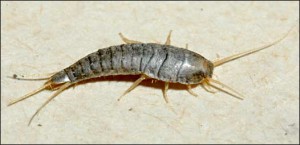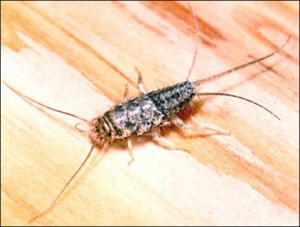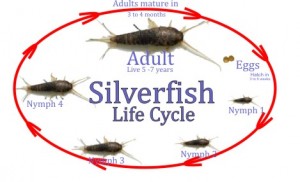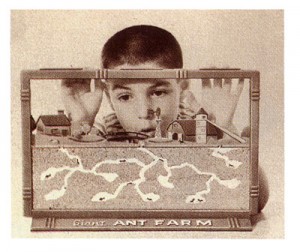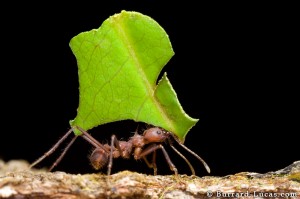What’s something you can find in your pantry, under your bath mat, or even in between the books on your shelf?
A silverfish of course! And if your reaction to silverfish is anything like mine after seeing a silverfish drop off a pantry shelf and onto your foot, you scream, jump around, then either have someone kill it and dispose of the body, or kill it yourself with a tissue and dispose of the body while pitying yourself. Something about the silverfish’s tiny silver scaly body, or its wiggly fish like movements, coupled with its ability to appear almost anywhere in our homes makes it an especially icky pest to deal with.
Despite the dismay I feel when seeing one of these critters crawling out from amidst the food stored in my pantry, I can’t deny the fact that they are one of the insects I’ll encounter the most in my home and possibly in my life. What better reason do I need than that to spark some curiosity about this small pest of the order thysanura?
Now I’ll ease you into this because I know silverfish might not at the top of your list of interesting insects to read about. These little guys have achieved a little spot in videogame pop culture by appearing in an extremely popular computer game, Minecraft. They pop up, unexpectedly, out of a number of seemly normal blocks and scuttle around quickly, and can even cause other silverfish to appear, creating a swarm-like infestation. This makes for a rather inconvenient event which mimics the real life silverfish that we are all familiar with.
(http://www.listal.com/list/list-minecraft-enemies)
Much like the silverfish in this game which appear randomly out of seemly normal places, silverfish in the real world pop out of all sorts of unexpected places, from books, to bathroom mats, causing me to wonder what in the world they’re doing there and how they’re even survivin. Well it turns out that silverfish’s feeding habits allow, even encourage, them to live in just these places. They feed on carbohydrates which are acquired from a variety of common household objects from books to glue to linen. This means that in large numbers, silverfish infestations can be serious threats to libraries, closets full of clothing, and more.
(http://www1.extension.umn.edu/garden/insects/find/silverfish-and-firebrats/)
There’s more to these little and seemingly un-exterminatable pests which explains their presence in seemingly any given corner of even the cleanest homes. Their sex usually consists of males depositing sperm packets, which females then take in order to reproduce. This is the more primitive form of reproduction which came before the sexual intercourse that more recently evolved insects have.
However there have been instances in which parthenogenesis, or asexual reproduction, has been recorded in these insects. This could theoretically allow the species to continue reproducing even in abnormal or more dangerous situations by just popping out female clone after female clone. On the previously mentioned link about their feeding habits, it is even mentioned that they are sometimes found in unopened packages. Imagine the excitement you might feel upon opening a bag of chips only to find dozens of silverfish because one silverfish egg somehow managed to find its way into the package, only to hatch and clone away for days.
I’ve been using the term silverfish to refer to our squiggly little friend, but in fact silverfish only one of several species of thysanura, also known as bristletails. There are thirteen species of the order thysanura here in the United States. Now all of these species have their own special preferences, but in general humid and relatively warm climates. This is yet another way in which our homes, basements, and attics are such a great place for silverfish to take up residence.
Here is a firebrat, a common species of thysanura found in the US.
(http://www1.extension.umn.edu/garden/insects/find/silverfish-and-firebrats/)
Now you might be thinking, “Man, silverfish are so gross and live all over my house and eat whatever they want,” but why don’t we give them another chance. Change pest into pets! That’s right, why not have a pet silverfish? Because they’re small squiggly and mostly just eat paper? Well that might be true, but different species of silverfish can live anywhere from several months to as many as five years. That’s longer than a hamster. Alternatively, if you really just can’t imagine a silverfish as a pet (honestly I can’t blame you at all), just remember the next time you see a little silverfish running by along the edge of the wall, you might be seeing him again in a few years, after he or she has produced hundreds more offspring!


